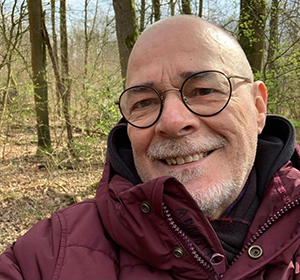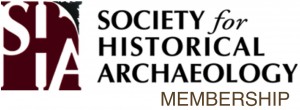Here’s the latest in our series of entertaining interviews with a diverse array of your fellow SHA members. Meet a member for the first time or learn something about a colleague that you never knew before. This blog series also offers current members an opportunity to share their thoughts on why SHA membership is important (Camaraderie? Professional service? Exchange of ideas in conference rooms and beyond? You tell us!). If you would like to be an interviewee, please email the Membership Committee Social Media Liaisons Eleanor Breen (eabreen@mountvernon.org) or Kim Pyszka (kmpyszka@aum.edu).
An Interview with Ben Paul Haynes (paulhaynes321@archaeologist.com/ paulhaynes0627@gmail.com), a board member of the Department of Anthropology at the University of Tulsa where he manages archaeological research for the university and other public and private clients. He's also a research fellow at the Laboratory of Archaeology of the University.
Fieldwork or labwork?
I like the physicality of fieldwork as well as the mental challenges, I love to be outside, and fieldwork has brought me to some really beautiful places. In the lab, I enjoy getting an in-depth look at the material culture and putting all the pieces together to better understand past human behavior. I love them both, but fieldwork just a bit more.
What would be your dream site to work at?
I believe every site is unique in its own way and that makes me intrigued and excited to explore each and every one of them. Every site is a dream site because I get to do archaeology. I mean really, I have a dream job.
What are you currently reading?
I’m currently reading the Ethics and Burial Archaeology by Duncan Sayer published by the Bristol Classical Press. Duncan proposes a new agenda for ethical studies in mortuary investigation, adducing a series of case studies which can be used to understand the questions facing burial archaeology.
What did you want to be when you grew up?
When I was a kid I wanted to be a doctor, or a pilot (I guess most people realized what they wanted when they were young changed at some point). It was about age 16 that I figured out I was interested and intrigued by ceramic and glass sherds I found while playing as kids. I also came to a realization that I was very much interested in historical events and past culture. I then decided to pursue archaeology since that was the most relatable. There have been a lot of people along the way who have influenced my path of becoming a historical archaeologist, but being an archaeologist is what I’ve always wanted.
Why are you a member of SHA?
This is a good question and one I ask myself every year before I join. I am mainly a member for the journal, but I’ve found our journal has become less cutting-edge theoretically and topically in the past 5-7 years. That being said, the content in the journal is still the best for those interested in historical archaeology and that’s why I am still a member.
At what point in your career did you first join SHA?
I joined SHA sometime in the early or mid-1990s, and I'm still going strong!
How many years have you been a member (approximately)?
22-24 years.
Which article from Historical Archaeology has been the most influential to you?
If ‘most influential’ equates to ‘most cited’, then it’s undoubtedly George Miller’s 1991 revised CC Index article (pdf), and Patricia Samford’s 1997 transfer print dating article (pdf). I’ve spent large parts of my career nibbling around the edges of George’s seminal work, and arguing why it doesn’t always apply outside of the United States, but I’m also very conscious that I’ll likely never produce anything of my own that’s so monumentally influential and important within my own little corner of the discipline (ed. note: both of these articles are available for free in our SHA Publications Explorer!!).
Which benefit of belonging to SHA do you find the most beneficial?
The journal is the biggest benefit on a long-term basis, but I think the conference is the most beneficial to the society because we get to meet our colleagues face to face.


